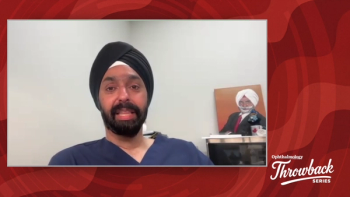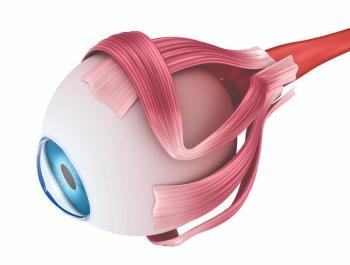
Real-world experience: Case study shows maintained benefits with FAc in DME patient
In the case study discussed in this article, a patient who was treated for DME with a fluocinolone acetonide intravitreal implant reported improved vision-related quality of life and the ability to perform daily routines without problems. These benefits persisted 12-months after treatment.
Take-home message: In the case study discussed in this article, a patient who was treated for DME with a fluocinolone acetonide intravitreal implant reported improved vision-related quality of life and the ability to perform daily routines without problems. These benefits persisted 12-months after treatment.
By Faye Emery, Reviewed by Dr Erica Guerreiro Paulo
Early experience shows that
Study details
The 62-year-old male patient, who was diagnosed with type 2 diabetes mellitus in 1992, was first treated for DME in 2004, for which he received left eye laser photocoagulation and triamcinolone injection. At this time his BCVA was 0.2 for his left eye and 0.8 for his right eye. Lost to follow-up until 2011, the patient’s BCVA had deteriorated to 0.2 in both eyes. In 2011 intravitreal anti-VEGF in the left eye gave no benefit for BCVA and given the lack of response to therapy and the long history of DMO, no further treatment was administered to the left eye at this time.
Prior to being treated with the FAc implant, the patient’s right eye had been treated with multiple injections of anti-VEGF and also short-acting corticosteroid. Surprisingly, anti-VEGF injections had no effect or led to a worsening of vision and central foveal thickness (CFT). In contrast, the early use of short-acting corticosteroid actually improved CFT with no change in vision. When combined with anti-VEGF there was an improvement in both CFT and vision, but subsequent anti-VEGF injections had little effect.
“In July 2013, after 3 years of being unresponsive to anti-VEGF treatment, the patient was given a 0.2 μg/day FAc implant,” explained Dr Guerreiro Paulo.
After only 3 weeks following the injection of the FAc implant there was a complete regression of DME and by 10 weeks CFT had decreased from 548 microns to 232 microns. This benefit was still sustained 6 months later and was accompanied by small improvements in visual acuity.
After 7 months, the FAc therapy was supplemented with 3 injections of anti-VEGF and this led to a small improvement in CFT with the fovea measured as 214 microns 12 months after the FAc implant had been initially injected.
Interestingly, the patient exhibited some benefit from treatment with the FAc implant above and beyond improvement in visual acuity.
“The patient reported greater vision-related quality of life and the ability to perform daily routines without problems, with no complaints regarding 0.2 μg/day FAc implant therapy,” reported Dr Guerreiro Paulo.
Rapid improvements in anatomy and functional gains observed
Dr Guerreiro Paulo observed rapid improvements in anatomy, with modest functional improvements, after the implantation procedure. This marked improvement was seen within just 3 weeks and sustained at 12 months.
There was a rise in intraocular pressure (IOP) within 2 months of the implant being injected; IOP increased from 16 mmHg to 28 mmHg. Eye drops were used to manage IOP and pressure was 21 mmHg at 6 months.
Dr Guerreiro Paulo noted that “The daily application of eye drops was not a concern for the patient and according to him did not interfere with his quality of life.”
Dr Guerreiro Paulo used the FAc implant as a last resort option for patients with very chronic DME that had not responded to many injections of anti-VEGF over a 2 year period. It was acknowledged, however, that the “…FAc implant could have been considered earlier in the treatment of DME and once the patient had shown limited or no response to anti-VEGF therapy.”
She also mentioned the possible benefit provided from using a short-acting corticosteroid. The patient showed an improvement in CFT following the injection of short-acting dexamethasone, which lead the authors to conclude that if the FAc implant had been licensed at the time, “...it may have been considered at this stage to help stabilise CFT and BCVA.”
Long term data from this and other, similar, case studies will help assess the longer-term safety of the FAc implant in patients with very chronic DME.
References
- E.A.B.C Guerreiro Paulo and Eckardt C. European Ophthalmic Review, 2014;8(2):137–139.
Dr Erica Guerreiro
Dr Guerreiro Paulo is an ophthalmology resident at the Department of Ophthalmology, Klinikum Frankfurt Höchst, Frankfurt, Germany
Dr Guerreiro Paulo has no financial disclosures relating to the content of this article.
Newsletter
Don’t miss out—get Ophthalmology Times updates on the latest clinical advancements and expert interviews, straight to your inbox.



















































.png)


